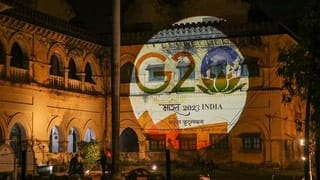G20 Finance Summit in India

By Mahina Wasim, BA Politics
In order to provide finance ministers and central bank governors with a forum for discussing global economic and financial challenges, the G20 group of 19 nations plus the EU was founded in 1999. Combined, the G20 nations make up over two-thirds of the world’s population, 75% of its trade, and 85% of its gross domestic product. The G20 was given the title of Heads of State, or Government, in the wake of the global financial and economic crisis of 2007 and was dubbed the ‘primary forum for international economic cooperation’. On December 1 2022, India took over as G20 President from Indonesia. In 2023, Pragati Maidan in New Delhi will play home to the inaugural G20 Leaders’ Summit.
The slogan for India’s G20 presidency is Vasudhaiva Kutumbakam, which translates to ‘One Earth, One Family, One Future.’ The goal is to identify global solutions that will benefit everyone. For the G20 Summit, India has several priorities. Green development, climate financing, and LiFE (Lifestyle for Environment) are some of the most significant objectives. The main focus is addressing climate change, with additional attention paid to climate finance and technology, as well as guaranteeing equitable energy transitions for developing nations. The launch of LiFE emphasises the significance of reaching environmental sustainability on a personal and a societal level, thus guaranteeing a cleaner and greener future. Its goal is to encourage ecologically responsible behaviour that is grounded in India’s sustainable customs.
The main focus is addressing climate change, with additional attention paid to climate finance and technology, as well as guaranteeing equitable energy transitions for developing nations.
Additionally, India wants to hasten the progress of the SDGs’ (Sustainable Development Goals), emphasising the renewed dedication to accomplishing the goals outlined in India’s 2030 Plan for Sustainable Development, with a particular focus on resolving the COVID-19 pandemic’s effects. To promote socioeconomic development and the fulfilment of the SDGs, there has also been a focus on women-led development, with a particular emphasis on women’s representation and empowerment.
Accelerated, Inclusive & Resilient Growth is another objective. This objective focuses on areas that have the potential to bring about structural transformation, such as supporting small and medium-sized businesses in international trade, advancing workers’ rights and welfare, addressing the global skills gap, and developing inclusive agricultural value chains and food systems.
Other objectives include Technological Transformation & Digital Public Infrastructure, which advocates for a human-centric approach to technology and increased knowledge-sharing in areas like financial inclusion, digital public infrastructure, and tech-enabled development in industries like agriculture and education, increasing the availability of digital technology. Additionally, it aims to step up efforts to modernise multilateral institutions for the twenty-first century and build an international system that is more accountable, inclusive, representative and capable of handling complex challenges.
Photo Caption: India’s take on the G20 summit logo (Credit: Press Trust of India).




